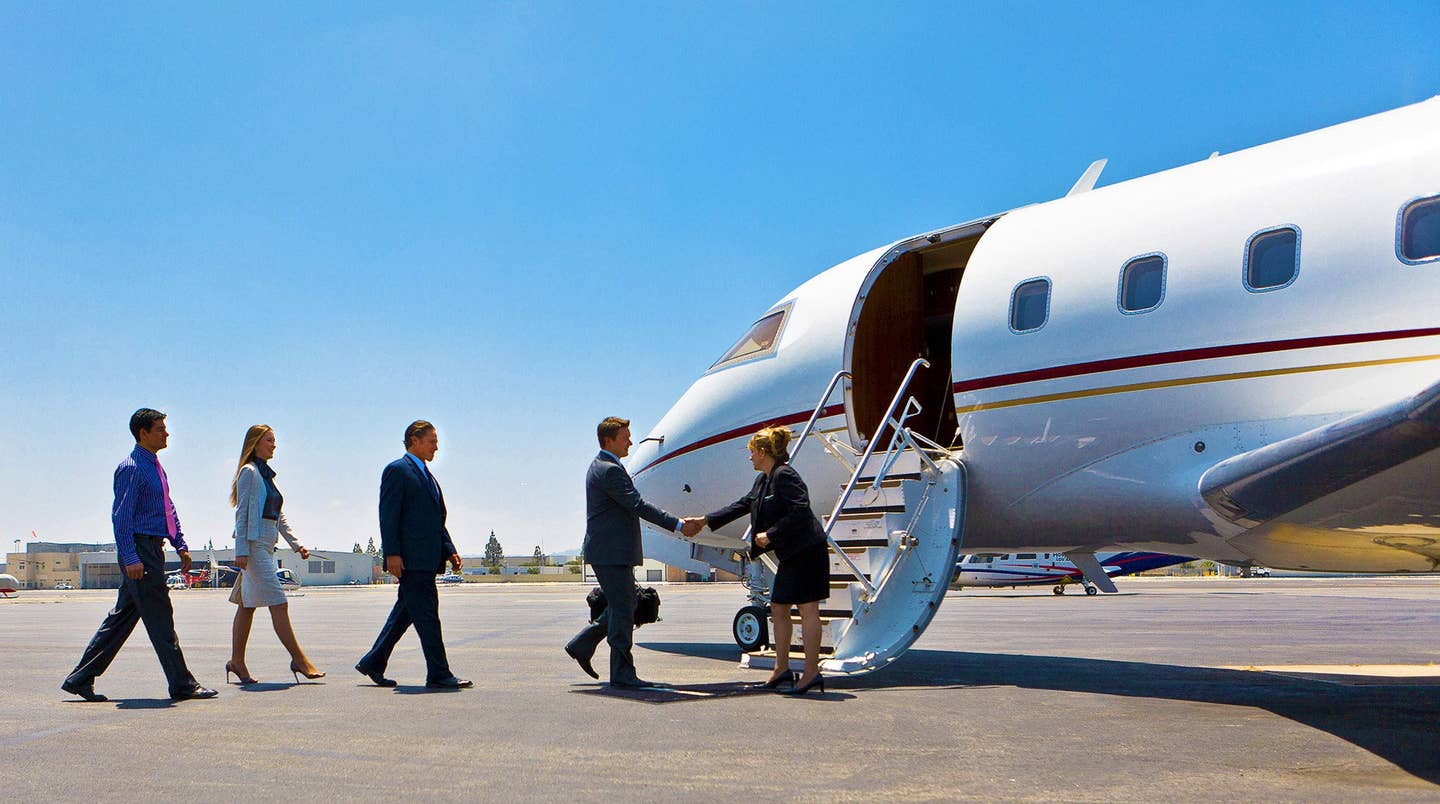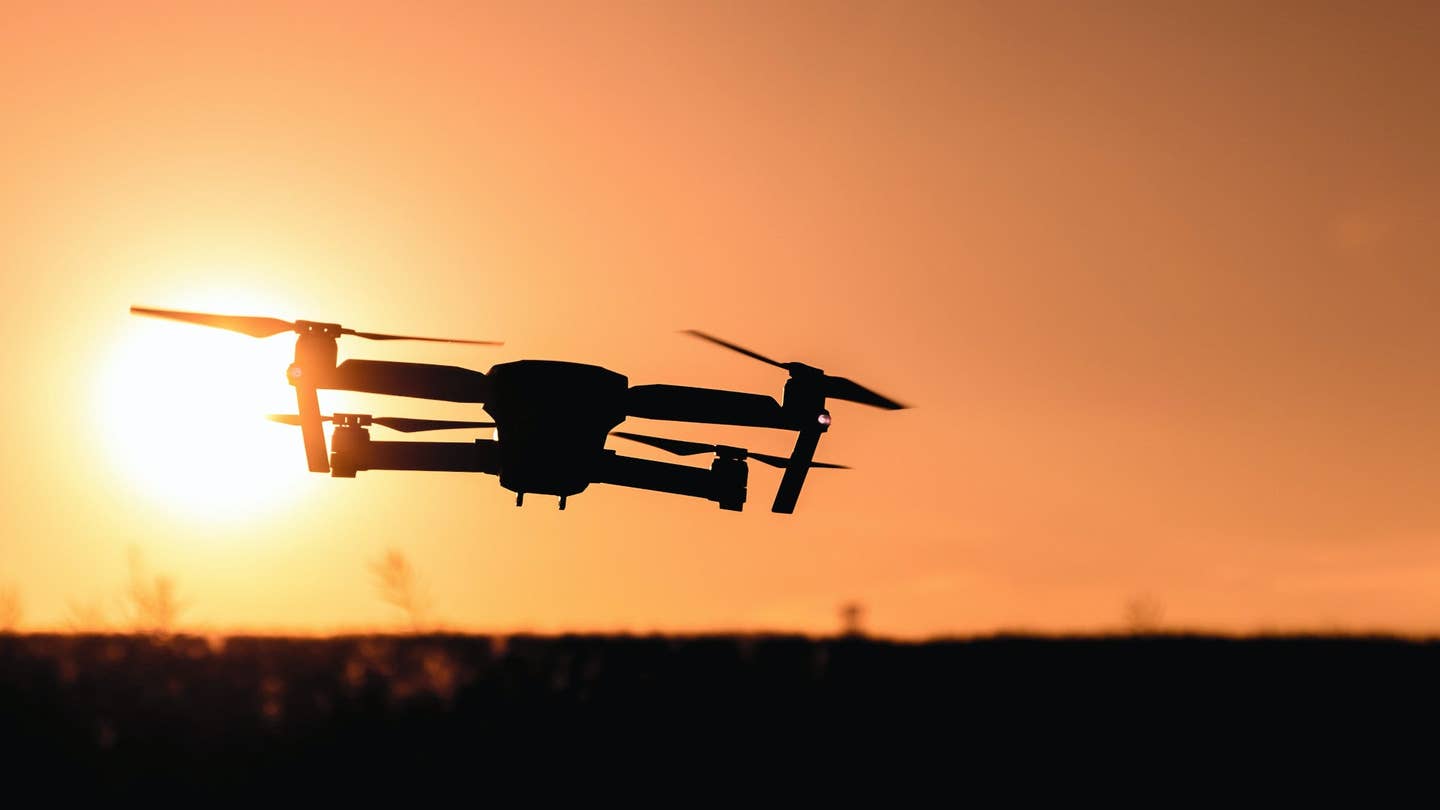Finding the Right Jet Share Program for You
Jet share programs allow travelers to access private aviation through various means.

A guide to finding high quality jet share programs. [Credit: Shutterstock]
Editor’s note: The following article is not intended to be a ranking, but is only to serve as a list of possible options. As the saying goes, your mileage may vary.
Jet share programs allow travelers to access private aviation through various means. There are multiple types of jet share programs that offer different benefits that customers can choose from, depending on the level of autonomy, ownership, exclusivity, flexibility, or capital investment that they want. Aircraft model and fleet size also affect the decision. If you plan to travel privately, whether it’s one-time-only, on an ongoing high-volume basis, or around the world, it is helpful to understand the different types of sharing programs that are available.
It’s also instructive to understand the programs that are out there if you plan on a career as a professional pilot, as many of these operations offer opportunities for professional pilots as they grow.
Quicklook: Jet Share Program Options
- VistaJet: Best for minimum upfront investment with access to the entire fleet
- NetJets: Best for travelers who fly 50 or more hours per year
- Wheels Up: Best for low entry-cost membership
- Jet Linx: Best for flexibility with no long-term commitment
- XO: Best for fixed-price charter with a customized jet membership program
5 Jet Share Program Options
VistaJet
VistaJet is a global business aviation company that offers flights between any two points, under a "pay for hours flown" fare structure. It operates a fleet of more than 80 privately-owned, mid-to-large-cabin, ultra-long-range Bombardier Global and Challenger business jets. Its jet share program/jet card option allows people who want to travel privately a relatively affordable option.
With VistaJet’s card program, buyers can pre-purchase a set number of bulk flights instead of individual legs. This option includes guaranteed availability at a fixed hourly rate. While VistaJet’s jet card might be more expensive than a fractional ownership structure, they don’t require an upfront jet share program expense like a fractional provider does. This jet share program will serve anyone who wants to travel privately on a regular basis without the capital expenses of fractional ownership, which typically requires an upfront acquisition cost.
Best for: Minimum upfront investment with access to the entire fleet
Fleet size: VistaJet offers its jet share program members access to a branded fleet of more than 80 super-midsize, long-range, and super-long-range turbine aircraft.
Operates globally? Yes, in 187 countries
Guaranteed availability? Yes
One-way rates? Yes, from $12,000 to 20,000
Reservation lead time: The lead times required by different private jet share membership program providers can vary from six to 12 hours for those offering guaranteed availability within a 24-hour time frame. During peak periods, reservation lead times can stretch from 24 hours to seven days before traveling.
Special Features:
- Travel pairing with luxury accommodations
- Private dining selection
- Wine in the sky
- Pet program
- In-flight library
- Extensive travelers' program for children
Benefits:
- Little commitment
- Easy to use—no need for brokers
- Predictable pricing
- Guaranteed airplane availability
- No repositioning fees
Disadvantages:
- High hourly costs
- Minimum flying times per program which makes shorter trips expensive
- Unexpected surcharges for non-standard operation
- Strict cancellation policies for peak days
Membership Options:
- Program: From $12,000 to $20,000 per hour and up depending on the aircraft
- Direct: Initial $40,000 deposit and $10,000 annual membership fee
NetJets
NetJets sells fractional ownership shares in private business jets and is the largest fractional aircraft provider. The NetJets fractional jet ownership model (or jet share program) provides the immediacy and luxury of whole aircraft ownership without operational complexities and hidden overhead costs. Owners purchase a portion, or share, of a specific aircraft. That share equates to a specific number of hours that they have to fly on that aircraft type—with the ability to upgrade or downgrade to any other aircraft in the fleet. Designed for travelers who fly 50 or more hours per year, this jet share program provides access to multiple cabin sizes equipped for a variety of needs and mission types. Owners typically purchase shares in 25-hour increments, with a minimum of 50 hours.
Best for: Travelers who fly 50 or more hours per year.
Fleet Size: More than 760 aircraft, worldwide, of all classes and sizes
Operates globally? Yes, to 170 countries and 2,200 airports
Guaranteed availability? Yes
One-way rates? Yes
Reservation lead time:
- Lead-time for reservations is 10 hours to 24 hours
- Fractional owners: 4 hours
- 120 hours for peak days
Special features:
- MedAire 24/7 global medical support
- Exclusive Luxury accommodation with premium hotels
- Complimentary stays at Jackson Hole, Wyoming, Vail, Colorado, Sea Island, Georgia, and others
- Car rental with Avis, Empire CLS, and Sixt
- Special golf packages
Benefits:
- Cheaper than outright ownership but with similar usability
- A smaller investment, with no need to work with a management company
- Wider airplane availability with buy-in
Disadvantages:
- Unexpected surcharges for non-standard operation
- Strict cancellation policies for peak days
- Longer-term commitment, usually in the three- to five-year range
- High upfront costs, including purchase price, monthly fees, and hourly flying fee
Membership options:
Minimum two-year term
- Light Jet: The investment cost for the Embraer Phenom 300 is $2.3 million
- Midsize Jet: The investment cost for the Cessna Citation XLS is $3.6 million
- Super Midsize Jet: The investment cost for the Cessna Citation X is $5.7 million
Minimum three-year term
- Heavy Jet: The investment cost for the Bombardier Global 6000 is $13.1 million
Wheels Up
Wheels Up provide a jet share program that features on-demand private aircraft travel and allows users of its platform to book private aircraft from the company fleet and third-party operators using a mobile application. Members can choose from three options that are designed to meet their needs, according to the frequency of travel, aircraft size, and access to remote locations. The Wheels Up Group is the second-largest private aircraft operator in the U.S. behind NetJets.
Best for: Low entry cost membership.
Fleet size: More than 1,500 private airplanes, owned, leased, managed, and partner aircraft, including light, midsize, super-midsize, and large-cabin jets
Operates globally? Yes. They offer point-to-point trips within North America and Europe, as well as all trips that start or end in the United States.
Guaranteed availability? Yes
- Pay-as-you-go memberships: 275 guaranteed availability days
- With a $100,000 deposit: 325 guaranteed availability days
- Core 200 and 400 members, with $200,000 or $400,000 deposit: 365 days guaranteed availability.
One-way rates? Yes, with Connect membership ($2,995)
Reservation lead time: From 24 to 72 hours based on the type of aircraft, deposit amount, and departure location.
Special Features:
- Multiple authorized lead passengers
- 24/7 member services team
- Dedicated account manager
- Shared, shuttle, and hot flights
- Wheels Down events, benefits, and concierge
- Inspirato membership and hot nights
Benefits:
- Better affordability
- More airplane options
- Cheaper for independent travelers
- Flexible cancellation policy
Disadvantages:
- Limited routes, especially regionally
- Lack of privacy
- Lack of flexibility
Membership Options:
- Connect membership, initiation fee is $2,995
- Core membership, initiation fee is $17,500
Jet Linx
The Jet Linx jet share program provides private air travel, leveraging a local market approach. To achieve this, it has bases around the United States that allow members to charter aircraft at a more affordable cost than many other traditional charter companies. Jet Linx’s charter flights support private travelers with irregular needs, and who need flexible options in pricing and location with little to no upfront commitment or fees aside from the trip expenses.
Best for: Flexibility with no long-term commitment.
Fleet size: Jet Linx operates a fleet of more than 100 managed light, midsize, super-midsize, and large-cabin jets.
Operates globally? Yes, but with 21 private U.S. locations.
Guaranteed availability? Yes
One-way Rates? Yes
Reservation Lead Time:
- Based on peak and non-peak travel days, 0 to 72 hours of advance notice, with cancellation times varying from 10 to 120 hours.
- Requires 96-hour notice during non-peak travel; 120-hour notice during peak travel.
Special features:
- Flight Funds: $250,000 non-refundable deposit or $350,000 non-refundable deposit (receives 3 percent flight credit)
- Referral Credit: $4,000 for signed Jet Card referral; $10,000 for signed Aircraft Management referral
Benefits:
- Pay per use
- Widest selection because of the number of operators
- Flexible costs
- Flexible airplane options
Disadvantages:
- Time-consuming to shop for the right option and get quotes
- Can be more costly due to the one-time-use model
- Unguaranteed availability
- Unvetted flight experience
- Extra ancillary fees
Membership Options:
- Jetcard membership—Executive card— $25,000
XO
The XO, formerly XOJET, jet share program provides on-demand private charters and the ability to purchase individual seats on shared flights. With access to over 3,000 aircraft, XO offers flight solutions —from fixed-price charter to customized private jet membership programs.
Best for: Fixed-price charter with a customized jet membership program.
Fleet size: A total of 200 group-owned, light to ultra-long-range aircraft, and access to more than 31,000 aircraft globally
Operates globally? Yes
Guaranteed availability? Yes, on off-peak days (as little as 24 hours' notice)
One-way rates? Yes
Reservation lead time: 72 hours
Special features:
- Paired experiences to select world-class destinations on a limited basis
- XO Membership offer insider access to unique experiences
- Access to exclusive amenities
- Access to lifestyle services that support travel
Benefits:
- Competitive flight pricing
- Asset-light alternative to full and fractional jet ownership and jet cards
- Access to the dedicated fleet and global fleet through partnering providers
- Carbon-friendly
Disadvantages:
- Membership fees can be costly
- Administrative fees
- Minimum deposit required to unlock some premium benefits
- Unpredictable availability
- Catering not included
- Fixed-rate only capped after lowering spending limit
Membership options: XO has five membership options:
- Buy as you fly: no membership fees
- Rise: $595/year
- Select Access: $250/month
- Signature Access: $500/month
- Elite Access: $1,000/month
What Is a Jet Share Program?
Private jet share programs offer travelers looking to leverage the benefits of private aircraft various options to do so according to their needs. Whether through fractional shares or jet cards and membership programs, jet share programs aim to maximize convenience, pricing, availability, and/or other benefits.
How Do Jet Share Programs Work?
Jet share programs have different models that users can choose from. Some include outright ownership, in which the user owns the aircraft but places it under management by a management company. There are also options for fractional ownership where a traveler can purchase a share of a specific aircraft for a certain amount of hours/usage while having access to the wider fleet. There are also jet card programs that allow users to purchase an allotment of hours without the upfront cost of purchasing a fractional share. There are membership programs that have a sign-off fee, and other benefits. Finally, there are charter operators that offer on-demand travel.
What To Consider With Jet Share Programs
Choosing the right program depends on a series of factors: the amount of travel expected, budget, travel partners, location, flexibility, and other amenities you might need. Before you choose a program, it is important to outline your needs so that you neither under nor overextend yourself.
Pricing Models
Pricing models will vary. Whole ownership that leverages a management company will benefit from owner fees when that jet gets chartered by another user and discounted fees when the owner uses it.
Fractional ownership typically requires buying a portion of a plane, starting at a one-sixteenth share (roughly 50 flying hours a year), and then paying appropriate trip fees.
Chartering is like renting a car; it might be more costly upfront but has no ongoing expenses. Users pay only for what they need and use, but availability isn’t guaranteed, and experience might differ. There are other fees that get added on to compensate for the company’s adjusting its operation to meet travelers’ needs.
Jet cards work like prepaid debit cards that offer you a block of hours, but unlike a fractional, don’t require a sign-on fee. Prices are predictable. Although hourly costs might be high and there are possible surcharges, airplane availability is more dependable than a charter.
Shared flights offer a pay-as-you-go model that only requires a yearly membership fee, after which members can look for open seats on private jets on the company’s platform. These trips are cheaper than most options, but based on availability, and offer limited privacy and flexibility.
Fleet Size and Seating
Fleet size is the number of aircraft a company has under ownership or management. Companies with larger fleets are able to offer users more departure and destination options, lower costs, and greater seating capacity. They can also tap into their partnership programs to offer an even wider selection than their owned fleet, which ensures that travelers get the support they need based on the membership program they select.
Business Model
Fractional Ownership: Fractional ownership typically requires buying a portion of an airplane, starting at a one-sixteenth share (roughly 50 flying hours a year), and then paying appropriate trip fees.
Blocks of Time in Predetermined Increments: Jet cards allow travelers to purchase a block of time in predetermined increments. They work like prepaid debit cards that offer you a block of hours, but unlike a fractional, they don’t require a sign-up fee. Prices are predictable, though hourly costs might be high and there are possible surcharges. However, airplane availability is more dependable than charter.
Pay as You Fly: With the pay as you fly model, members travel on shared flights. It usually requires an initiation fee and a yearly membership fee, after which members can look for open seats on private jets on the company’s platform. These trips are cheaper than most options but based on availability, and limited privacy and flexibility.
Flat Rate: Very few companies offer a flat rate, unlimited flying model, which is no different from a subscription business, but these are few and far between. The variable costs of operating and maintaining aircraft make this option untenable in the long run for businesses. Users who are savvy can maximize the benefits, provided that the company has a reliable fleet. However, they should also expect the flat rate fee to be costly.
Guaranteed Availability
Guaranteed availability is a premium benefit that private jet providers offer to members regardless of other demand. Frequent travelers who want to minimize their wait or trip time will want to ensure that the program they enroll in offers guaranteed availability.
Primary Service Area
Private jet companies use a primary service area to delineate where they are able to provide the guaranteed availability benefit or other membership programs without disruption or extra cost. They exist so that companies can have predictable costs. While companies are able to operate beyond their primary service areas, those trips will cost extra as they include non-standard fees.
One-Way Rates
One-way rates are a premium benefit that some companies offer where they will discount a trip that flies the user to a destination only but might operate empty on the return flight unless another user books that flight at the destination end. It could also work in the reverse, that is, in order to pick up the traveler. Sometimes there are ferry or repositioning fees to cover that empty leg.
Reservations and Lead Time
The lead time is simply how much advance notice a jet company needs to fulfill your trip. It is dependent on a series of things such as demand, aircraft availability, scheduled maintenance, location, and others. For some companies, lead time can vary from a couple of hours to 72 hours, or weeks during peak periods. Premium members of some programs will have priorities that may shorten their lead times.
Cancellation
Cancellation fees are used to protect the jet share program service provider from last-minute cancellations that may tie up inventory without proper compensation. For some companies, a 100 percent fee will be charged if a flight is canceled between 24 to 48 hours before the trip. Others may be more flexible, requiring cancellation notices to be given less than 10 hours in advance of a scheduled flight. This is because their service model limits the disruption if a member cancels.
Extra Charges
In some instances, there may be extra fees outside direct trip costs that will add to the final bill. These include surcharges due to higher fuel prices, taxi fees, annual fees, and even taxes that get added on. While many companies now offer Wi-Fi, there are some that still charge customers for that onboard service. Other onboard services can cost too, such as catering. Finally, there may be operational fees for landing at certain airports.
Join a Jet Share Program and Take To The Skies
Private flying obviously has its benefits. With the proliferation of options, travelers have the flexibility to choose a jet share program based on what suits their needs. There are pros and cons to each model that offer both convenience, flexibility, and a range of services. Travelers who understand each model will be able to maximize their experience. Learn more about aviation business, flying techniques, and fly-in destinations with a subscription to FLYING.
FAQ
How Much Does It Cost to Timeshare a Jet?
Using fractional company PlaneSense as an example, ownership shares start at one-sixteenth in the Pilatus PC-12/PC-12 NG ($354,000, plus $1,189 per hour and a $6,450 monthly management fee) and in the Pilatus PC-24 (about $705,000, plus $2,405 per hour and a $9,534 monthly management fee).
How Much Does 100 Hours of NetJets Cost?
For $1.3 million, customers will first have to purchase five years of privileges chartering a near-new Embraer Phenom 300 private jet. After the $1.3 million buy-ins, their contract gives them access to fly in it 100 hours a year for $524,000 annually, which includes a monthly management fee of $18,000.
What Is the Safest Private Jet Company?
NetJets has led the industry in safety standards. Its pilots have more than eight times the industry standard in-flight experience, and NetJets is the first private aviation company to reach the highest level of the FAA’s Safety Management System (SMS) initiative.

Subscribe to Our Newsletter
Get the latest FLYING stories delivered directly to your inbox






